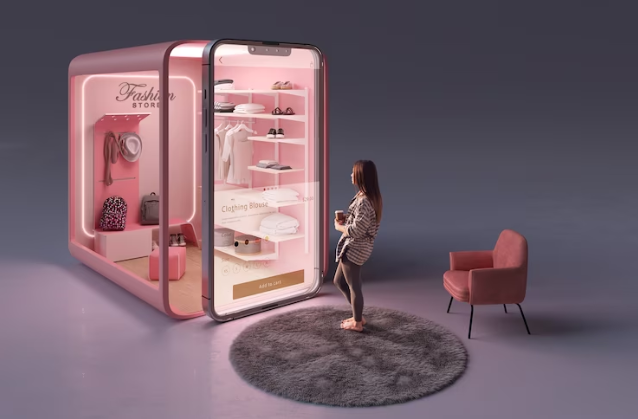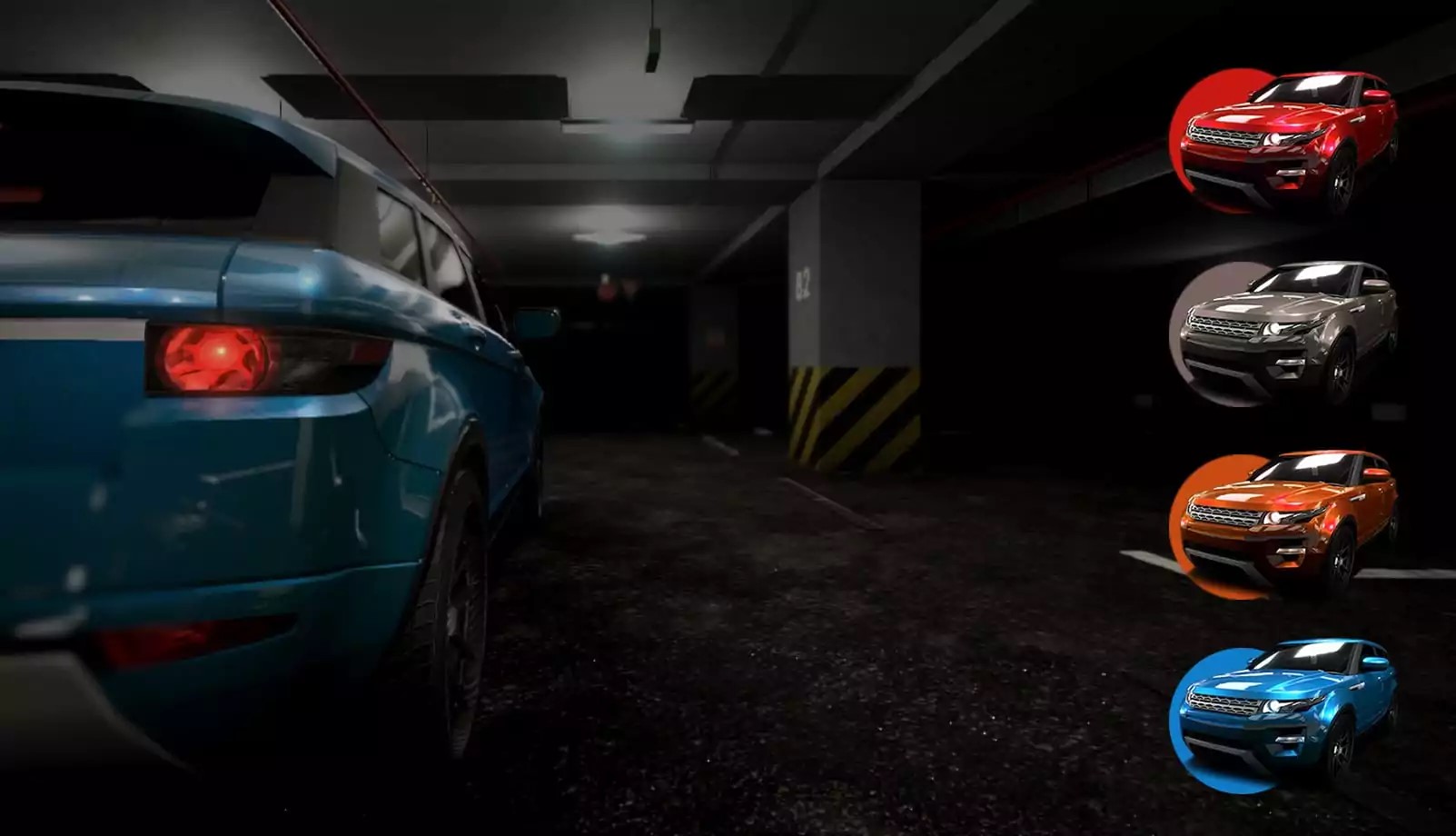"Why Does 3D Design Shape the Future of Digital?
Creating a three-dimensional space on the web has been one of the desires of programming and software teams worldwide in recent years. With the introduction of WebGL technology and the development of 3D graphic engines for the web, this desire has become a reality and has brought about significant changes in the IT industry. Providing three-dimensional environments in web browsers requires a powerful graphic rendering engine capable of creating, processing, and displaying information. Today, many developers and companies, with the training of their employees in this field, are striving to make the most of this technology and bring a new dimension to their e-businesses."
The Concept of 3D Websites
Web developers have always been on the lookout for new and exciting experiences for users. One of these experiences is the three-dimensional space, which has emerged for the first time using technologies like WebGL. 3D websites, in general, are websites that utilize 3D graphics and shapes to provide an immersive interactive experience to users. The main features and characteristics of 3D websites are as follows:
1. Environment Visualization: In 3D websites, users can fully and precisely visualize and interact with the environment, navigating through the space using control tools.
2. Interactive and Engaging: These types of websites allow users to interact with content in an interactive manner, such as changing perspectives, zooming in and out, or even moving in a three-dimensional space.
3. High Realism: Using advanced rendering and lighting techniques, 3D websites provide realistic and visually appealing images.
4. Responsiveness: They are typically designed to respond to various input methods, such as mouse, touch, or even virtual reality input devices.
5. Content Continuity: In 3D websites, content can seamlessly and continuously transition from one part to another, resembling a virtual tour.
Examining these features demonstrates the high potential and power of 3D websites in enhancing user experiences and engagement. With the advancement of technology and the increase in internet speed, it is expected that the use of such websites will become more prevalent and carve out a place among traditional websites.

The New Technology vs. Panorama Image-Based Websites
Details and Complexity: 3D websites, using new technologies, are capable of displaying more details and depth complexity. In other words, instead of a static image that cannot be viewed from every angle, you can look around, up, down, and even inside objects.
Interaction and Responsiveness: 3D websites offer more advanced interactive capabilities. Users can interact with the environment rather than just viewing it. This interaction can include moving within the space, clicking on objects, or making changes in the environment.
Realism: Thanks to advanced rendering technologies, 3D websites appear more realistic and natural. On the other hand, panorama images, while beautiful and wide-ranging, do not match the realism and authenticity of a 3D website.
Resource Requirements: 3D websites with new technologies usually require more resources, both in terms of design and processing power. In contrast, panorama websites mainly use images and require fewer resources.
Sense of Presence: 3D websites provide a more noticeable sense of presence. Users feel like they are inside a virtual space, while panorama images are more limited in this regard.
Accessibility: Generally, panorama image-based websites are more accessible for a wider range of devices and internet speeds. 3D websites may require more advanced equipment or faster connections.
In conclusion, both formats have their own advantages and disadvantages, and the choice depends on the project's needs, goals, and budget.
Advantages and Disadvantages of Deploying 3D Models on the Web via WebGL
The advantages and disadvantages of deploying 3D models on the web using WebGL are as follows:
Advantages:
Broad Browser Support: Many major browsers like Google Chrome, Mozilla Firefox, and Safari support WebGL, making it user-friendly.
Direct Use of GPU: Using the WebGL API, developers can directly leverage users' GPU capabilities, improving rendering speed.
Elimination of Plugin Requirements: Since WebGL is a web standard, developers don't need to rely on external plugins, which can be problematic in terms of security and compatibility.
Disadvantages:
Client-Side Limitations: If a user has a device with limited graphics capabilities, 3D models may not be displayed correctly or may render at lower quality.
Security Concerns: Any transmission of graphic data to the browser can raise security concerns, especially if the data is sensitive or proprietary.
Quality and Size Constraints: Due to the need for fast loading and bandwidth limitations, models may require compression, which can result in reduced quality.
Loading Time: High-volume 3D models can increase page loading times, especially for users with slow internet connections.
Advantages and Disadvantages of Sharing 3D Models via Cloud Rendering and Streaming
1. High-Quality Renders Without the Need for Local Graphics Processing:
Whether for home gamers, remote technology startups with distributed teams, or multinational engineering consultancy firms, using cloud rendering and streaming allows sharing high-quality 3D models. Previously, sharing 3D content through the cloud was not as easy or high-quality.
2. Cloud Streaming Comes at a High Cost and Is Latency-Sensitive but Offers Greater Value:
In terms of cost, cloud streaming can be expensive due to the computational demands of graphics processing in the cloud. However, despite potential delays, this technology enables access to high-quality 3D models.
3. Data Remains Secure During the Transfer of Rendered Images:
Preserving the security and privacy of proprietary data is crucial for companies. When using cloud-based streaming solutions, only the rendered image is transmitted, ensuring that the original source files remain secure.
4. Choosing the Most Effective Tool for Sharing is Vital for Companies:
Both WebGL and cloud streaming are effective methods for sharing 3D content, but the choice depends on the project's requirements. Using cloud-based solutions can provide the flexibility and support needed for high-quality sharing in any location and at any time.
Building and Preparing 3D Web Structures
The stages of creating a 3D website in TantApp are as follows:
1. Modeling: In this stage, the desired 3D objects are created. You can use existing 3D files produced by reputable software such as Maya, Autodesk 3ds Max, Sketchup, AutoCAD, Solid Work, ArchiCAD, Cinema 4D, or others, or even use files provided by the client.
2. Material Creation: Materials and surface effects needed for 3D objects are created using web-based rendering engines.
3. Animation: In this stage, motion or animation for the 3D objects is created to add life and realism to them.
4. Preview and Publishing: The 3D project is displayed in a web environment for the client to review and provide feedback. If any changes or modifications are required, they are made at this stage.
5. Packaging: The final file is prepared and packaged according to the client's needs and requests, making it suitable for various purposes and platforms.

"What types of businesses are suitable for the new 3D website technology?"
New 3D technology on websites is suitable for various businesses. Here are some examples of businesses that benefit from 3D technology on the web:
1. Online Stores:
- Enhanced User Experience: 3D technology in e-commerce allows customers to view products from different angles with more details.
- Reduced Product Returns: When customers can see products with more detail, it increases the likelihood of making informed decisions, reducing product returns.
2. Architecture and Interior Design:
- Pre-execution Project Visualization: Customers can experience designs and decorations in a virtual, 3D environment before actual implementation.
- Interaction with the Environment: Changing colors, furniture, or wall designs without the need for physical changes.
3. Automotive Industry:
- Virtual Test Drives: Customers can experience test drives in their desired car model through VR technology before making a purchase.
- Interior and Exterior Details: Viewing interior materials, rear trunk space, lights, and more in detail.
4. Games and Online Entertainment:
- Easy Access: WebGL-based web games run without the need for downloads or installations.
- Multiplayer Experiences: Multiplayer gaming and interaction with players worldwide.
5. Education and Research:
- Simulations and Virtual Experiments: Using 3D models for teaching complex subjects and conducting virtual experiments.
- Interactive and Step-by-Step: Navigating 3D environments and performing interactive tasks.
6. Tourism Industry:
- Virtual Tours: Pre-visit tourist attractions through virtual tours.
- Better Planning: Assisting tourists in selecting locations and planning their trips.
7. Film and Advertising:
- Unforgettable Advertisements: Creating engaging and memorable 3D advertisements.
- Better Product Showcase: Introducing products in 3D with more details.
AR/VR Technology:
- Virtual Reality Experiences: Browsing websites or apps in 360 degrees or using VR headsets.
- Augmented Reality Interaction: Adding digital information to the real environment using mobile cameras and other devices.
The emphasis on 3D design services has grown in various industries due to advancements in technology. It not only benefits digital stores but also enhances efficiency and accuracy in fields like construction, drafting, interior decoration, and many more. TantApp allows you to turn your future visions into reality today.
Reasons to Emphasize the Use of 3D Design Services
The emphasis on using 3D design services has increased for several reasons:
1. Technological Advancements: With advancements in technology, particularly in 3D modeling and rendering, it has become easier and more accessible to create high-quality 3D designs. This has expanded the possibilities for designers and businesses.
2. Enhanced User Experience: 3D designs offer a more immersive and engaging user experience. Whether it's for e-commerce, architectural visualization, or entertainment, 3D designs allow users to interact with products and environments in a more realistic way.
3. E-commerce Benefits: In the world of e-commerce, 3D design has revolutionized the way products are showcased online. Customers can view products from various angles, zoom in for details, and sometimes even virtually try them, leading to higher customer satisfaction and reduced returns.
4. Diverse Applications: 3D design services are not limited to digital stores. They have found applications in various industries such as architecture, interior design, real estate, gaming, education, and more. These industries benefit from 3D designs for planning, marketing, and visualization purposes.
5. Virtual Tours: Virtual tours and 360-degree photography provide potential customers with an immersive preview of real estate properties, hotels, or tourist destinations. This helps in decision-making and planning.
6. Advertising Impact: 3D design allows for the creation of visually stunning and memorable advertisements. These ads can leave a lasting impression on viewers, making them more effective in conveying messages and promoting products.
7. Educational and Training Tools: 3D models and simulations are valuable tools for education and training in fields such as medicine, aviation, engineering, and more. They enable learners to understand complex concepts through interactive experiences.
8. Efficiency and Accuracy: In industries like architecture and interior design, 3D designs offer improved efficiency and accuracy in planning and execution. Designers can identify and address issues before they become costly problems.
9. Competitive Advantage: Businesses that embrace 3D design gain a competitive edge. They can differentiate themselves from competitors by offering innovative and visually appealing solutions.
10. Starting Today for Tomorrow: As technology continues to advance, those who invest in 3D design today are better prepared for the future. It allows for adaptation to changing market demands and consumer expectations.
In conclusion,
The adoption of 3D design services has become increasingly important across various industries due to the numerous benefits it offers, ranging from improved user experiences to enhanced efficiency and competitiveness. It has opened up new possibilities for businesses and designers alike, making it a valuable investment for the present and the future.
With Tenetup, what you envision for your future begins today!


